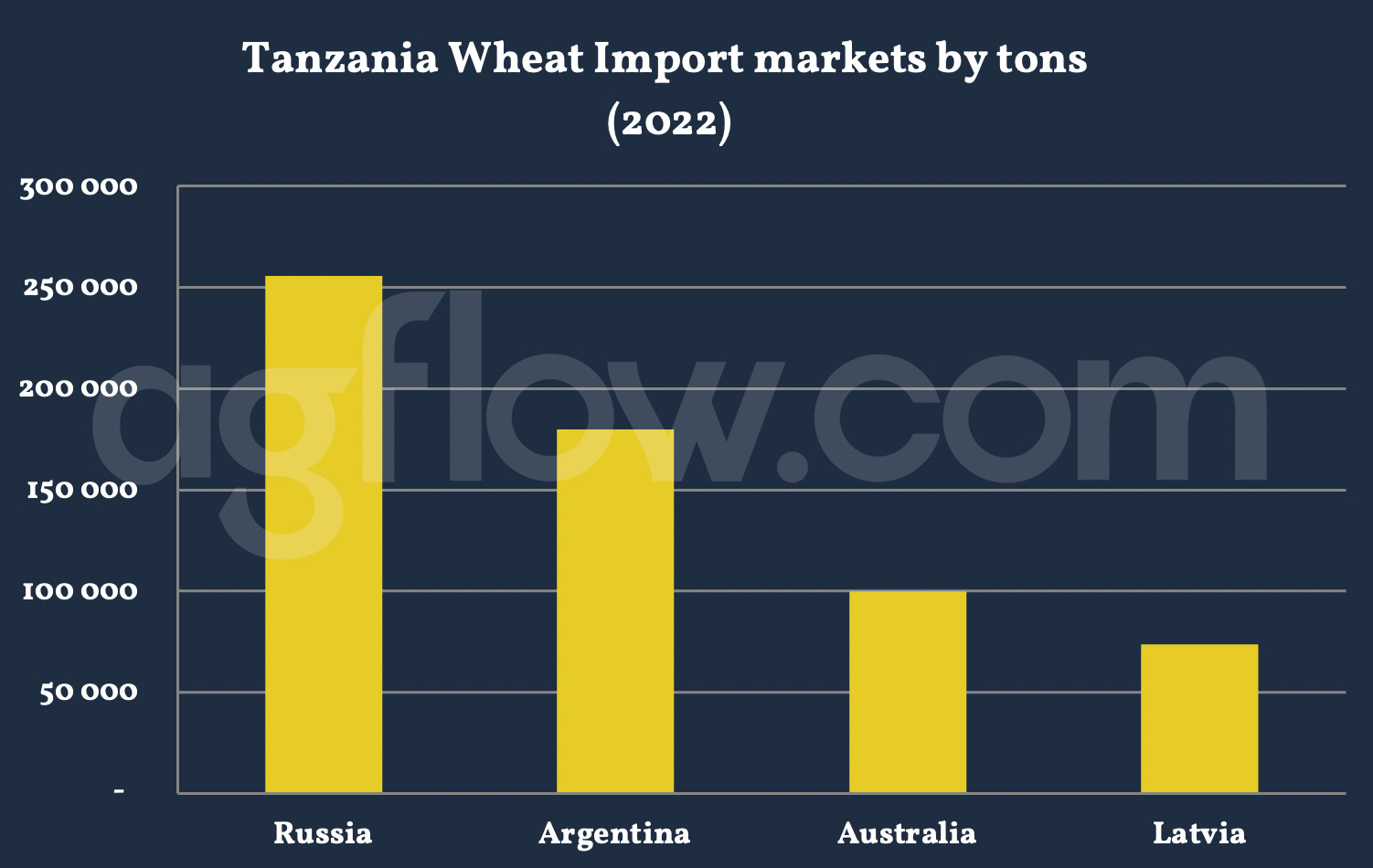Tanzania: Rising Demand for Wheat Products
Reading time: 2 minutes
Tanzanian Wheat production is forecast at 68,000 MT in MY 2023/24, a 9 percent decrease year-on-year as farmers switch from Wheat to alternative crops. More than 90 percent of Tanzania’s Wheat production comes from the Northern and Southern Highlands regions. Local sources indicate planting in both regions has been disrupted by delayed rains and the untimely distribution of Government-subsidized fertilizer. The area planted for Wheat is anticipated to decrease from 60,000 to 55,000 hectares as local sources indicate farmers are planting alternative crops such as corn and beans.
Corn is increasingly attractive to Tanzania farmers due to soaring prices, and some Wheat farmers have switched to beans due to delayed rains. Beans generally perform better than Wheat under low rainfall conditions, and Tanzania farmers switch to beans when rain is delayed or below average levels. The level of Wheat mechanization in Tanzania can be grouped into three modes of production: large-scale mechanized production, small-to-medium-scale mechanized production, and hand-tool production, with large-scale mechanized farms dominating output in the Northern Highlands. In the Southern Highlands, farms fall under a mix of medium-scale mechanization and hand-tool production.
Post estimates MY 2022/23 production at 75,000 MT due to low yields associated with drought conditions in the Northern Highlands. Post maintains its previous area harvested forecast of 60,000 hectares. According to local sources, farmers decreased the area dedicated to Wheat in MY 2022/23 as they switched to bean production in response to delayed rainfall. Consumption MY 2023/24 consumption is expected to rise 4 percent to 1.175 million MT.
A shift towards Wheat consumption has been observed in urban and peri-urban areas, with urban areas accounting for 80 percent of Tanzania’s Wheat consumption. The growth of major cities like Dar es Salaam, Mwanza, and Arusha has supported long-term demand growth for Wheat products as consumers turn to staples that are easy to prepare and consume without sitting down at a table. Commonly consumed Wheat products include chapati (an Indian flat bread), mandazi (an African donut), and bread. Growth Wheat products include pasta, biscuits, and breakfast cereals.
Rising incomes have also increased demand for Wheat products as consumers shift from corn-based staples to new products utilizing Wheat as a primary ingredient. According to the World Bank, Tanzania’s per-capita income has increased 50 percent since 2010, reaching almost $1,100 in 2021. Tanzania’s overall milling capacity currently stands at about 10,000 MT per day, compared to 6,000 MT in 2016, although no new milling investment occurred in 2022.
Tanzanian Wheat milling industry is concentrated in Dar es Salaam with local companies with modern Wheat mills and silos. Changes to MY2022/23 MY 2022/23 consumption is estimated at 1.125 million MT, an increase of 75,000 MT from the year before, reflecting a long-term shift in consumption towards Wheat. While Wheat prices have increased in 2022/23, Wheat prices have raised less than corn prices on a relative basis which has more than doubled year-on-year.

Tanzania Wheat Import
Wheat consumption in Tanzania is ranked fourth after corn, cassava, and rice. Post forecasts a 6.2 percent increase in MY 2023/24 Wheat imports to 1.115 million MT due to rising demand and declining domestic production. Tanzania primarily imports Wheat from Russia, Australia, Ukraine, Argentina, the EU, and Canada. According to AgFlow data, Tanzania imported 0.25 million tons of Wheat from Russia in 2022, followed by Argentina (0.18 million tons), Australia (0.1 million tons), and Latvia (73,709 tons).
While Tanzania traders appreciate the high quality of U.S. Wheat, they report that increased shipping costs make it less competitive than alternative sources. Ukraine and Russia are essential exporters to Tanzania, particularly Russia, which regularly supplies more than half of Tanzania’s Wheat supply.
Other sources: USDA
Try AgFlow Free
Access Free On Updates for Corn, Wheat, Soybean,
Barley, and Sunflower Oil.
No Credit Card Required & Unlimited Access In Time

